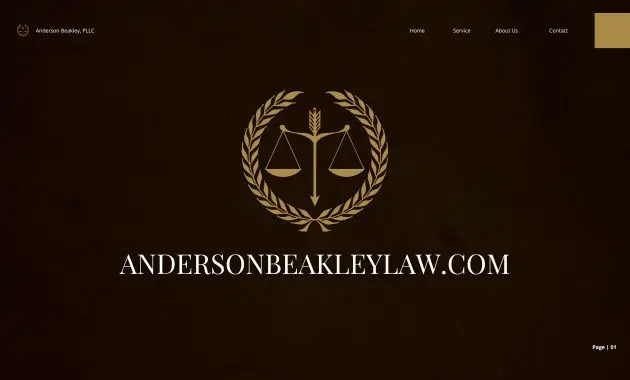Insolvency law and advice are crucial for businesses and individuals facing financial distress. This area of law deals with the legal framework surrounding bankruptcy, debt restructuring, and the rights and obligations of creditors and debtors. Understanding insolvency law is essential for navigating the complex process of financial recovery, whether you’re a business owner facing a downturn, an individual struggling with debt, or a creditor seeking to protect your interests.
This guide explores the fundamentals of insolvency law, delving into the various types of insolvency proceedings, the common causes of financial distress, and the roles of creditors and debtors in the process. We’ll also discuss practical tips for preventing insolvency, the importance of seeking professional legal advice, and emerging trends shaping the future of insolvency law.
Understanding Insolvency Law: Insolvency Law And Advice
Insolvency law is a crucial area of legal practice that deals with the financial distress of individuals and businesses. It aims to provide a fair and orderly process for dealing with debts when an entity is unable to meet its financial obligations. Understanding the fundamentals of insolvency law is essential for anyone involved in business or personal finance.
Also Read
Fundamental Principles of Insolvency Law
Insolvency law is based on several fundamental principles that guide its application and ensure fairness for all parties involved. These principles include:
- Equality of Creditors: This principle ensures that all creditors are treated equally in the insolvency proceedings, regardless of the nature or amount of their claims. This principle prevents preferential treatment of certain creditors over others.
- Maximizing Creditor Recovery: The primary goal of insolvency proceedings is to maximize the recovery of funds for creditors. This involves identifying and realizing assets of the insolvent entity and distributing the proceeds among creditors in a fair and equitable manner.
- Fresh Start: Insolvency proceedings aim to provide a “fresh start” for debtors by discharging their debts and allowing them to rebuild their financial lives. This principle helps to prevent debtors from being overwhelmed by debt and encourages them to re-enter the economy.
- Transparency and Accountability: Insolvency proceedings are conducted in a transparent manner to ensure accountability and prevent fraud or abuse. This includes public disclosure of financial information and regular reporting to creditors and the court.
Types of Insolvency Proceedings
Insolvency proceedings can take various forms, depending on the specific circumstances of the insolvent entity and the applicable legal framework. Some common types of insolvency proceedings include:
- Bankruptcy: This is a formal legal process that involves the liquidation of an insolvent entity’s assets and the distribution of proceeds to creditors. Bankruptcy proceedings are typically initiated by the debtor or their creditors.
- Receivership: In receivership, a court-appointed receiver takes control of the insolvent entity’s assets and manages its operations. The receiver’s primary goal is to preserve the value of the assets and maximize recovery for creditors. Receivership is often used for businesses that are still operating but are facing financial difficulties.
- Chapter 11 Reorganization: This type of insolvency proceeding is available in the United States and allows insolvent businesses to restructure their debts and continue operating. Under Chapter 11, the debtor develops a plan of reorganization that is submitted to creditors for approval. If the plan is approved, the debtor can emerge from bankruptcy with a restructured debt load and a new business plan.
Common Legal Terms Related to Insolvency
Understanding common legal terms related to insolvency is essential for navigating this complex area of law. Some key terms include:
- Debtor: The individual or entity that is unable to pay its debts.
- Creditor: The individual or entity that is owed money by the debtor.
- Insolvent: The state of being unable to pay debts as they become due.
- Liquidation: The process of selling an insolvent entity’s assets to repay creditors.
- Reorganization: The process of restructuring an insolvent entity’s debts and operations to allow it to continue operating.
- Discharge: The release of a debtor from their debts after the completion of insolvency proceedings.
- Trustee: An individual or entity appointed to manage the insolvent entity’s assets and distribute proceeds to creditors.
Causes of Insolvency
Insolvency, the state where a company cannot meet its financial obligations, is a complex issue with numerous contributing factors. Understanding the common causes of insolvency is crucial for businesses to identify potential risks and implement preventive measures. This section explores the key factors that contribute to business failures, highlighting the impact of economic downturns, industry-specific challenges, and internal management decisions.
Economic Downturns, Insolvency law and advice
Economic downturns, characterized by periods of recession or significant economic decline, can significantly impact business operations and contribute to insolvency. During such periods, businesses may experience a decrease in demand for their products or services, leading to reduced revenue and profitability. This can result in cash flow shortages, making it difficult for businesses to meet their financial obligations.
Here are some ways economic downturns impact insolvency:
* Reduced consumer spending: During economic downturns, consumers tend to reduce their spending on non-essential goods and services, leading to decreased demand for businesses in those sectors.
* Increased borrowing costs: Higher interest rates during economic downturns can increase the cost of borrowing for businesses, making it more challenging to finance operations and invest in growth.
* Supply chain disruptions: Economic downturns can disrupt global supply chains, impacting the availability of raw materials and finished goods, leading to production delays and increased costs.
Industry-Specific Challenges
Insolvency rates can vary significantly across different industries, influenced by factors such as competition, technological advancements, and regulatory changes. Industry-specific challenges can lead to reduced profitability and increased financial strain, making businesses more vulnerable to insolvency.
Examples of industry-specific challenges that can contribute to insolvency include:
* Technological disruptions: Rapid technological advancements can disrupt established industries, rendering existing products or services obsolete and forcing businesses to adapt quickly to stay competitive.
* Increased competition: Globalization and the rise of online marketplaces have intensified competition in many industries, putting pressure on businesses to lower prices and improve efficiency to remain profitable.
* Regulatory changes: New regulations or changes in existing regulations can significantly impact business operations and profitability, leading to increased compliance costs and potential fines.
Financial Mismanagement and Poor Decision-Making
While external factors like economic downturns and industry-specific challenges can play a role in insolvency, internal factors such as financial mismanagement and poor decision-making often contribute significantly to business failures.
Examples of financial mismanagement and poor decision-making that can lead to insolvency include:
* Inadequate financial planning: Failing to develop a comprehensive financial plan, including budgeting, cash flow forecasting, and risk management strategies, can leave businesses vulnerable to unexpected financial shocks.
* Over-leveraging: Taking on excessive debt can create a high financial burden, making it difficult to meet repayment obligations, especially during economic downturns or periods of reduced profitability.
* Poor inventory management: Inefficient inventory management can lead to excessive inventory costs, tying up valuable cash flow and increasing the risk of obsolescence.
* Lack of investment in innovation: Failing to invest in research and development, technology, or other areas that can improve efficiency or create new products or services can lead to a decline in competitiveness and profitability.
* Lack of transparency and accountability: A lack of transparency and accountability in financial reporting can lead to poor decision-making, fraud, and ultimately, insolvency.
The Role of Creditors
Creditors play a crucial role in insolvency proceedings, as they are the parties owed money by the insolvent company. Understanding their rights and responsibilities is essential for both creditors and the company navigating insolvency.
Creditor Rights in Insolvency Proceedings
Creditors have specific rights under insolvency law that aim to ensure they receive a fair share of the insolvent company’s assets. These rights include:
- Filing a Proof of Debt: Creditors must formally file a claim, known as a “proof of debt,” to establish their debt amount and validate their right to receive a payment.
- Participation in Meetings: Creditors have the right to attend meetings convened by the insolvency practitioner, where they can vote on key decisions regarding the company’s future, such as the appointment of an administrator or liquidator.
- Receiving Dividends: If the insolvent company’s assets are sufficient to cover all claims, creditors will receive a pro-rata distribution of the proceeds, known as a “dividend.”
- Challenging Transactions: Creditors can challenge transactions made by the insolvent company before the insolvency proceedings, which they believe were unfair or prejudicial to their interests.
Filing Claims and Receiving Payments
The process of filing claims and receiving payments from insolvent companies can be complex and varies depending on the specific insolvency proceedings. However, the general steps involved include:
- Obtaining the Necessary Forms: Creditors can obtain the necessary forms for filing a claim from the insolvency practitioner or the relevant court.
- Completing and Submitting the Claim: The completed claim form must be submitted to the insolvency practitioner within the specified deadline.
- Verification and Acceptance: The insolvency practitioner will review and verify the claim. If it is accepted, it will be included in the list of creditors.
- Distribution of Dividends: Once the assets of the insolvent company have been realized, the insolvency practitioner will distribute the proceeds to the creditors according to their claims.
Creditor Protection Mechanisms
Insolvency law offers various mechanisms to protect creditors’ interests, ensuring they receive a fair share of the insolvent company’s assets. Some of these mechanisms include:
- Priority Claims: Certain creditors, such as employees and secured creditors, are given priority in receiving payments from the insolvent company’s assets.
- Stay of Proceedings: When an insolvency proceeding is initiated, a “stay of proceedings” is imposed, preventing creditors from taking independent action against the insolvent company, ensuring an orderly and fair distribution of assets.
- Insolvency Practitioner’s Supervision: The insolvency practitioner oversees the process, ensuring that the assets of the insolvent company are properly managed and distributed to creditors in a fair and equitable manner.
- Fraudulent Trading: This legal principle allows creditors to pursue personal liability against directors who knowingly continue to trade a company while insolvent, potentially exposing them to financial losses.
Insolvency law is a complex and multifaceted area, requiring careful consideration and expert guidance. While navigating financial distress can be challenging, understanding your rights and obligations under insolvency law is essential for achieving a favorable outcome. Whether you’re a business owner, an individual facing debt, or a creditor seeking to protect your interests, seeking professional legal advice can provide valuable insights and strategies for navigating the complexities of insolvency.



